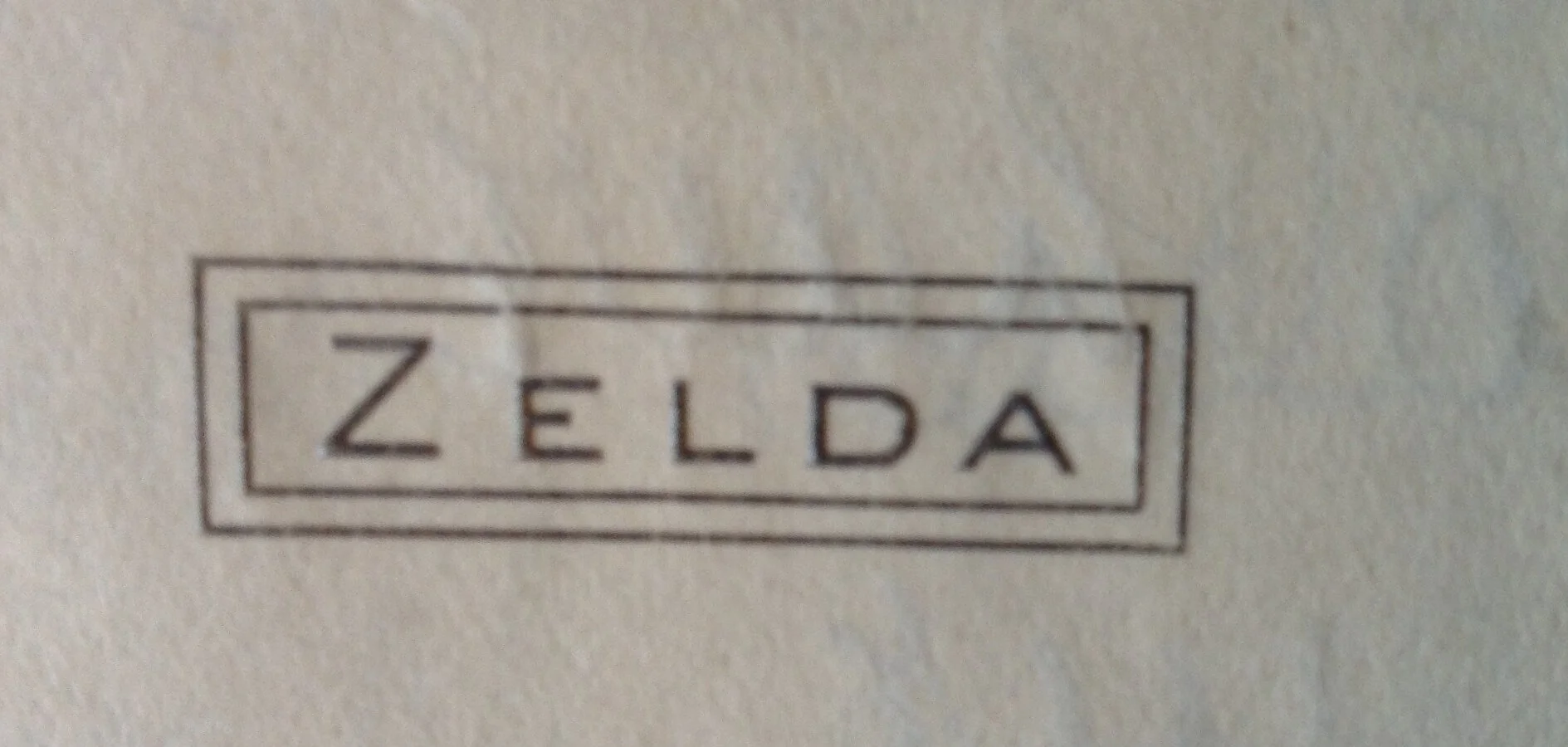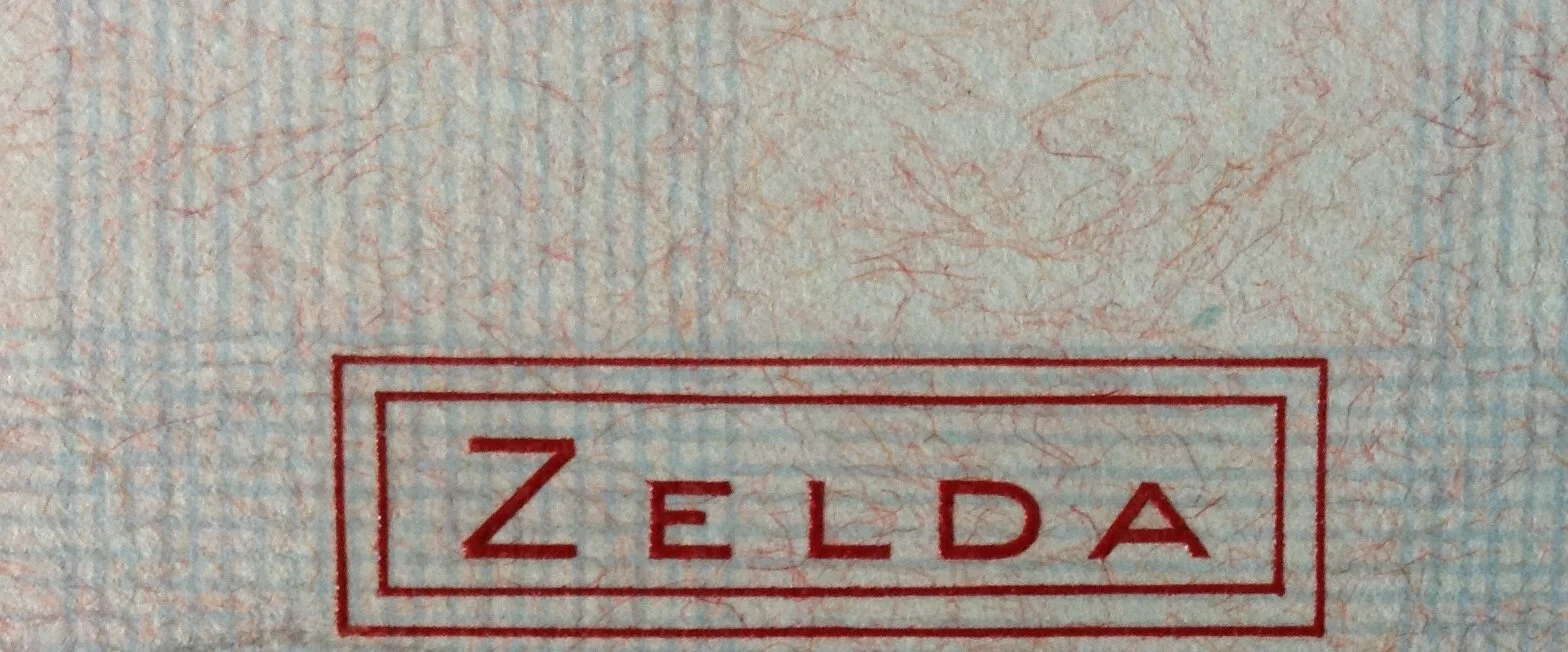Fitzgerald Family Writing Paper: A Short Stationery Story
Once upon a time, people who could afford to wrote letters on personalized stationery, the paper thick and expensive, their names and perhaps addresses at the top in colored ink placed there by the channels cut in a copper plate. We seem to reserve this behavior for wedding invitations and special occasions today, if even then. Personal writing paper is thermographically done, printed out on a printer. When you run your fingers over a name, it’s smooth: no dips and ripples to please the touch.
In these pandemic days when friends are far away and Zoom cocktails are how you see each other, when the United States Postal Service is under direct attack from the federal government that founded and is meant to foster and fund it, people are writing letters. Janet Somerville, the Toronto-based editor of Martha Gellhorn’s wartime letters, has been sending a #letteraday to friends around the world for years; more recently, writer Rachel Syme and politicians from Alexandra Ocasio-Cortes to Elizabeth Warren have been urging us to cultivate new penpals.
That my job entails reading the letters of the dead is sometimes an emotional burden. Yet in this age of email and text, leafing through old letters can be such a pleasure. Even when one is reading letters as thoroughly studied by scholars as those among F. Scott Fitzgerald, Zelda Sayre Fitzgerald, and their family, surprises can happen — and beauty, and unexpected humor, spills from the very stationery itself.
After their marriage in April 1920, Scott and Zelda showed plenty of personality in their personalized notepaper. The bestselling young author of This Side of Paradise had money, and one of the Fitzgeralds’ many indulgences was nice stationery, for themselves, for their baby daughter, and for their mothers.
Scott always preferred his name in full, in capitals, and in a very traditional font: part of his author’s profession. What he chose to append to “F. Scott Fitzgerald,” however, in 1921 is exceptionally fine.
best self-knowledge exhibited by a writer, ever
Did the former Zelda Sayre of Alabama choose to be “Mrs. F. Scott Fitzgerald”? She did not. The paper, and ink color, may change, but on most of her correspondence, Zelda is Zelda.
russet ink, perhaps once the color of her auburn hair
Ten years later, she was using the same copper plate.
love that red
In her letters from Highlands Hospital in Asheville, North Carolina, during the late 1930s, Zelda’s distinctive and individual name is — with a sad appropriateness — lost. She writes under her married initials, all in lower-case. The “S” of her maiden name, Sayre, now appears. The background is blue, but those letters are golden.
Zelda Sayre Fitzgerald
The Fitzgeralds picked writing paper in the 1920s for their respective mothers. Zelda always called her mother, Minnie Sayre, “Mama.”
Mama from Montgomery
Mollie Fitzgerald was, if you’d asked her son Scott, easily identified thus:
Fitzgerald’s parents moved to Washington to be near their son and his family
After Frances Scott Fitzgerald was born in October 1921, Mollie made a delighted and significant change to her notepaper.
Little Frances Scott, or Scottie, as her family called her, was soon writing to her grandmothers — and to other important addressees like Santa Claus — from Paris and Cannes and Hyères on her own notepaper, with her name in fine Jazz-Age Metropolitan-style lettering.
These personal writing papers of the Fitzgeralds show intimate things about the personalities of their selectors: boldness; silliness; sense of humor; sense of self; sense of family. Be inspired by Scott and Zelda. Write a letter to someone today, and carefully choose the paper you wish to use, as you sit down with your pen to savor the time.
Anne Margaret Daniel 2020
all images © Princeton University Libraries / Rare Books and Special Collections / Manuscripts Division







